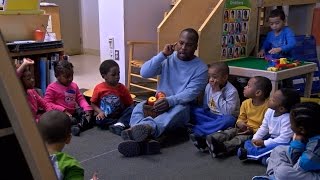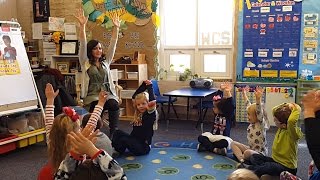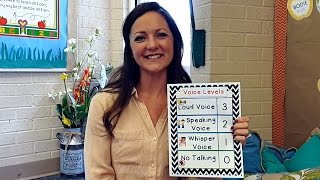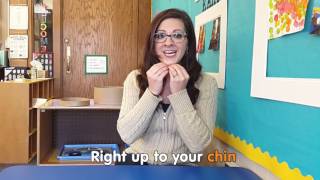This in-service suite shows how to create expectations for classroom behavior that preschool children can learn. It is part of a series of 15-minute in-service suites on Engaging Interactions and Environments.
More information is available at http://eclkc.ohs.acf.hhs.gov/hslc/tta-system/teaching/practice/engage/iss/state.html
We accept comments in the spirit of our comment policy: http://www.hhs.gov/web/socialmedia/policies/comment-policy.html
Read Transcript
Welcome to this short module on stating behavioral expectations. In this module we focus on the importance of stating expectations for the children in their preschool classrooms, and we offer four steps to guide teachers planning. Stating behavioral expectations in advance, is a proactive teaching strategy, that helps to prevent problem behavior. The house framework was developed by the National Center on Quality Teaching and Learning, to highlight and organize the important components of quality teaching and learning, and to show how the components work together. Stating behavioral expectations in advance fits into the foundation of the house, it’s a foundational teaching strategy. There are lots of reasons why children might not know all the behaviors that are expected of them in their preschool classrooms. The child might be new to school, or to the experience of playing and learning with a group of children. The child may be moving into a new classroom. There also may be a few differences between what’s expected at school, and what’s expected at home, or in other places. We’ve all found ourselves in new situations, and new places where we felt a bit uncomfortable. It helps to have someone be the guide, to tell us what’s expected, and help us feel more comfortable and confident. In the preschool classroom the teacher can be the guide, and can teach the children the expectations and help them be successful. Behavioral expectations are the appropriate behaviors expected from children during specific activities and routines. For example, the teacher may expect children to use quiet voices when inside the classroom, or raise their hands at circle time when they have ideas, or answers. Or, say please and thank you when passing the food at mealtime. Teachers state the behavioral expectations by saying what they want to see. It’s helpful to think of the steps that make up the teaching strategy of stating behavioral expectations in advance, even though teachers use this strategy in the moment they’re interacting with children, it actually requires planning outside of classroom time. Here are the four steps: anticipate, develop a plan, prepare the children, and recognize children’s appropriate behavior. To anticipate behaviors means that the teacher needs to do some work ahead of time. The teacher thinks through the activities and routines of the school day, and asks questions like what happens when the children arrive? Or, what are the expectations for free choice, or for time at the interest areas? Do the children get to choose? Are there a limited number of spots at each Center? Do the children need to clean up after each Center? There are many questions to be answered this work can be done with the teaching team, so that all the adults I the classroom know the expectations. The next step is to plan, write out the expectations in a positive way. Write what you want the children to do. Plan and gather the teaching materials that may be needed to help children learn the expectations. Some teachers use posters, or pictures, or stories. The third step is to prepare the children for what you expect to see, your expectations. This can be done by stating the expectations at the beginning of the activity or before the transition to the next activity. Check to make sure that children really understand, and repeat the expectations often, especially at the beginning of the school year, or when a child is new to the classroom. And now the fourth step recognize and acknowledge children’s appropriate behavior. Teachers can do this by making positive statements, making eye contact, and giving smiles, or sending notes home. There are lots of ways to recognize children as they are learning the behavioral expectations of classroom activities. I see somebody raising their hand so look their Carrie-Anne’s being respectful. This module highlighted the teaching strategy recall stating behavioral expectations. This is a proactive strategy that helps children feel more comfortable and confident in their classrooms, and it’s a strategy that can prevent problem behaviors from occurring. Please see our tips and tools and helpful resources that accompany this presentation. Thank you for listening.






